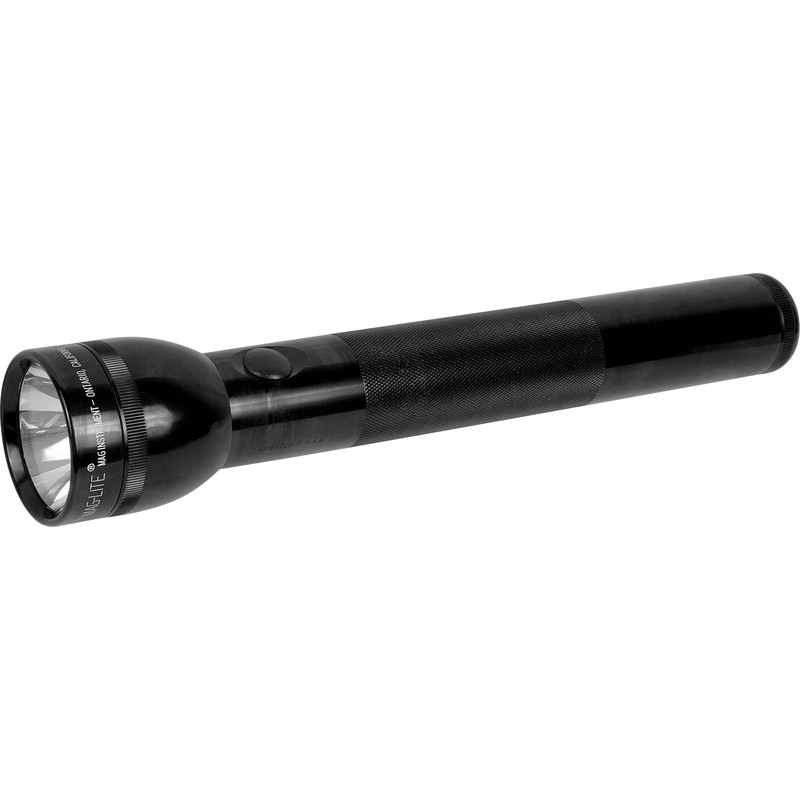
These modern lights, at most price points, offer an exceptional combination of range, output, runtime and really incredible ruggedness, with most higher-end examples being highly water resistant to boot. The most common feature by far shared among all the flashlight diaspora is the use of energy-dense CR123 lithium batteries, the employment of which made lights of this type possible. Many are designed to be used in conjunction with or even mounted to a firearm for defensive use. Switching is most often a tailcap, but sometimes a rocker or tandem switch. All will utilize high-output LED assemblies mated to excellent circuitry to regulate power consumption for optimum life and sustained brightness. They are constructed from strong, light aluminum alloy or from one of several blends of high-impact plastics. This flaw belied a commonly exploited perk: a large Maglite loaded with D batteries is very heavy, and makes for a formidable impact weapon nearly the equal of a purpose-built club or baton, an unadvertised function commonly employed by police, security and bouncers.Īside from the aforementioned switch to LED, Maglites have changed very little since their inception, and it is this dogged refusal to make serious changes or alterations to their core product that has endeared them to some flashlight enthusiasts while aggravating candlepower connoisseurs.Ĭompared to the Maglite in any of its guises, the modern flashlight offered by such competing companies as Surefire, Streamlight, Olight, Fenix and Nitecore among many others are typified by a few salient characteristics inherent to the modern breed of hard-use, high-quality lights.Īll will be of more or less compact size, easily carried in the hand or in the front pocket of a pair of jeans. Large Maglites were rightly famous for their general sturdiness in their prime, but were commonly derided for their bulk and weight. This produces an all around light source but does make the bulb/LED vulnerable to damage. One unique feature of Maglites that is rare among other lights is a “candle” mode, where the protective lens and bezel of the flashlight is removed, exposing the LED or bulb, and then used as a base for the light. The other most common modes are a much smaller and lighter AA- or AAA- cell unit with the same essential features except that the activation and focusing is accomplished by twisting the head, which is generally regarded as inferior to a dedicated switch for the same purpose. Batteries are inserted or removed via a thread off cap at the tail of the light. They feature twist-adjustable focusing at the bezel and a side mounted activation switch near the head. Originally incandescent they have since made the switch to LED light sources long after they became the industry standard, though incandescent models are still available. The stereotypical Maglite as most consumers know it is a very large, heavy tube shaped light made from aluminum and using either D- or C-cell batteries. Has Maglite kept pace with the new paradigms of light design and performance? Or are they an obsolescent holdout from their glory days? In this article we will try to answer that question for prospective light buyers.

But is that still the case today? High-performance flashlights are as common as Coke across the globe, and the competition among their makers for consumers is ferocious, as is their unending quest for greater brightness, longer battery life and improved durability. For a long, long time Maglite was synonymous with hard-use flashlights, warts and all. Maglite eventually branched out with a family of similar lights powered by smaller and smaller batteries, an attractive option for those who needed a sturdy light close at hand. Many homeowners had a big Maglite stashed in a cabinet or junk drawer for inevitable power outages, its black aluminum tubular body and side mounted activation button enduring dings and dents that would break the cheap plastic competitors of the day. Around since 1979, their flagship light was and remains a gigantic multi D-cell monster that was a standard tool on the belts of cops, tradesmen and other blue-collar professionals from the 80’s all the way through the 1990’s and early 2000’s.

Maglite (or Mag-Lite, if you are a pedant) is one of the most recognized names in flashlights.


 0 kommentar(er)
0 kommentar(er)
